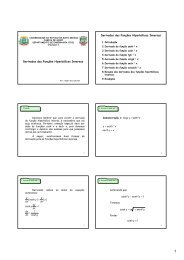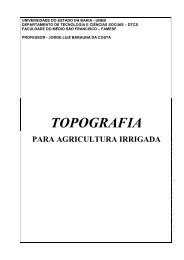Anuário Brasileiro do Arroz 2011 - Unemat
Anuário Brasileiro do Arroz 2011 - Unemat
Anuário Brasileiro do Arroz 2011 - Unemat
You also want an ePaper? Increase the reach of your titles
YUMPU automatically turns print PDFs into web optimized ePapers that Google loves.
Time<br />
has<br />
gone<br />
Leading producer of<br />
dry land rice in the<br />
Country, Mato Grosso<br />
improves quality but<br />
reduces planted area,<br />
with an eye towards<br />
competitiveness<br />
The production profile for rice in<br />
Mato Grosso has changed radically<br />
over the past six years. The leading<br />
producer of dry land rice in Brazil<br />
reached its peak in the 2004/05<br />
crop year, with a planted area of<br />
777 thousand hectares, which resulted<br />
into a harvest of 2.04 million<br />
tons. At present, the State<br />
ranks as third national producer,<br />
coming after Santa Catarina and<br />
Rio Grande <strong>do</strong> Sul, two states that<br />
specialize in irrigated paddy fields.<br />
Mato Grosso has changed its<br />
production system, previously<br />
based on forest clearing for soybean<br />
crops and livestock operations,<br />
and is now going through<br />
a new reality: both planted area<br />
and production volumes have diminished,<br />
but yield and quality are<br />
on the rise. Currently, rice is grown<br />
in rotation with soybean, corn and<br />
cotton or for the recovery of degraded<br />
areas.<br />
In the 2010/11 crop year,<br />
Mato Grosso harvested 687.4<br />
thousand tons, <strong>do</strong>wn 7.4% from<br />
the 742.7 thousand tons of the<br />
previous year. The planted area<br />
dropped 9.5% from the second<br />
last and last crops, receding from<br />
246.9 thousand hectares to 223.4<br />
thousand.<br />
However, average yields soared<br />
2.3%, from 3,008 kg/ha to 3,077<br />
kg/ha, with some fields reaching<br />
up to 5 thousand kg/ha. In the<br />
2004/05 crop year, average yields<br />
reached 2,800 kg/ha. In the current<br />
period, yields have soared 9%,<br />
representing an additional 277 kg<br />
per hectare.<br />
Now, what prevails in the State<br />
are the so-called “old areas”,<br />
where new technologies began to<br />
resort to fertilizers, management<br />
maximization practices and the<br />
use of more productive cultivars<br />
with better grain quality. This<br />
resulted into a 71-percent reduction<br />
in seeded area, but 35% of<br />
the volumes produced consisted<br />
of 58-percent unbroken kernels,<br />
while 40% of the crop contained<br />
upwards of 52-percent unbroken<br />
kernels. Up to 2006, Mato Grosso<br />
used to harvest 47% of unbroken<br />
kernels and rarely reached a rate<br />
of 55%. With such raw material,<br />
the State produced parboiled rice<br />
or type 2 rice. Type 1 rice was only<br />
possible in mixtures with superior<br />
quality rice from the South.<br />
DECISIVE TURN With its<br />
production falling into the category<br />
of long-grain rice in 2005<br />
(therefore, not included in the<br />
Brazilian standards), along with<br />
low commercialization prices, Mato<br />
Grosso needed to get restructured<br />
and is still reaping the ripple effects.<br />
In no condition to open new<br />
areas and with the Cirad 141 cultivar<br />
marginalized due to the low<br />
quality of the seed “saved” by the<br />
growers, the sector was forced to<br />
invest in research works.<br />
It was then that the picture of<br />
technology innovation came in. At<br />
this point in time, AN Cambará, of<br />
Agro Norte Sementes e Pesquisas,<br />
is the pre<strong>do</strong>minant variety in Mato<br />
Grosso.<br />
Also expressive is the area<br />
planted to two Embrapa varieties:<br />
Sertaneja and Primavera. Rotation<br />
schemes with soybean, blackbeans,<br />
corn, cotton and the recovery<br />
of degraded pastureland have<br />
been the target of new technical<br />
guidelines regarding lime applications,<br />
fertilization practices and<br />
the control of weeds, pests and<br />
diseases.<br />
And the rice pattern in Mato<br />
Grosso changed for the better.<br />
“With this new technology package<br />
and the chance to produce a<br />
winter crop, as of next year, it is<br />
only the market that is setting limits<br />
to the revitalization of the rice<br />
business in the Center-West.”, says<br />
Mairson Santana, manager at Agro<br />
Norte.<br />
67


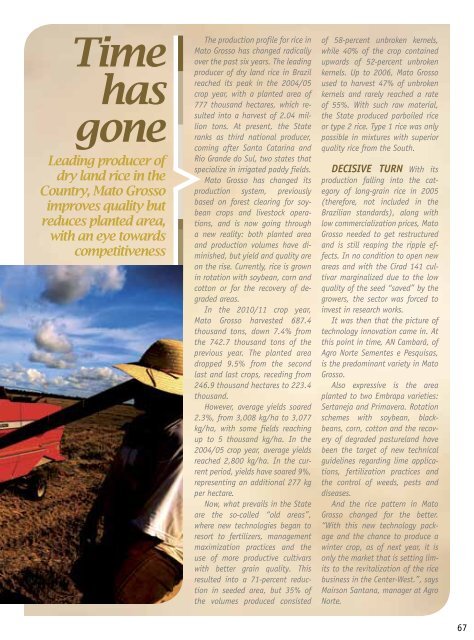
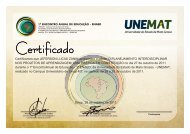
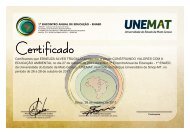
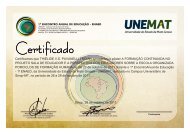
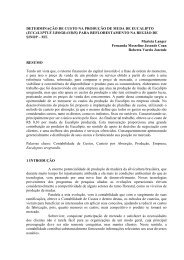
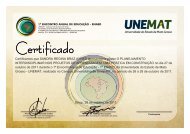
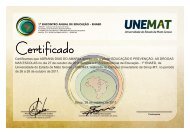
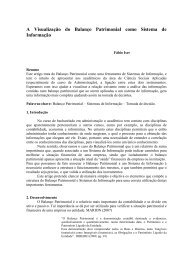
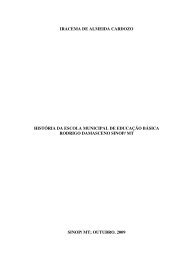

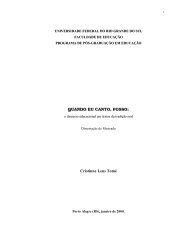
![Aula 31 - Funções Hiperbólicas [Modo de Compatibilidade] - Unemat](https://img.yumpu.com/14334654/1/184x260/aula-31-funcoes-hiperbolicas-modo-de-compatibilidade-unemat.jpg?quality=85)
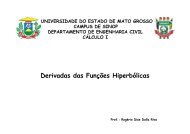
![Aula 31 - Funções Hiperbólicas [Modo de Compatibilidade] - Unemat](https://img.yumpu.com/14332146/1/190x135/aula-31-funcoes-hiperbolicas-modo-de-compatibilidade-unemat.jpg?quality=85)
